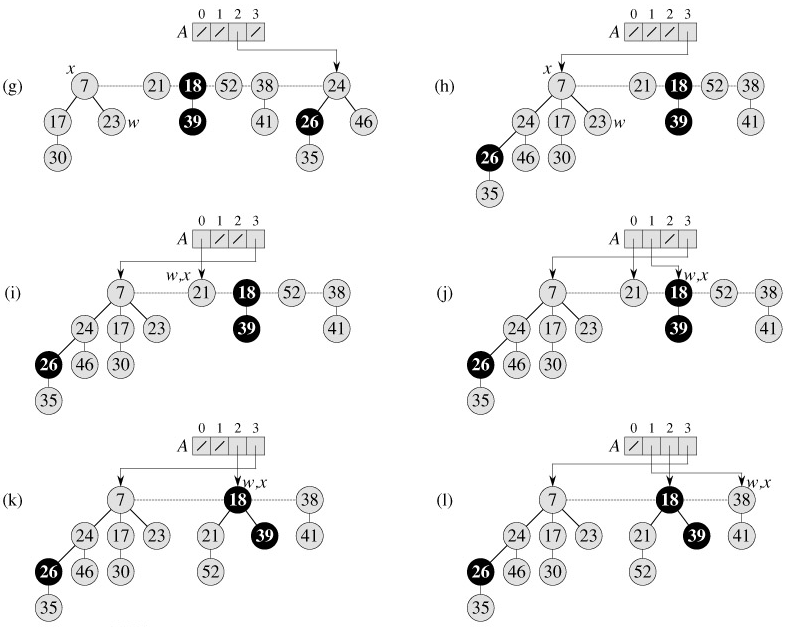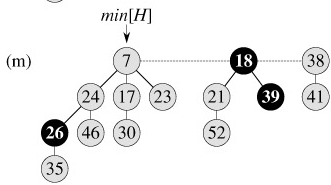SKEDSOFT


We start in line 1 by saving a pointer z to the minimum node; this pointer is returned at the end. If z = NIL, then Fibonacci heap H is already empty and we are done. Otherwise, as in the BINOMIAL-HEAP-EXTRACT-MIN procedure, we delete node z from H by making all of z's children roots of H in lines 3-5 (putting them into the root list) and removing z from the root list in line 6. If z = right[z] after line 6, then z was the only node on the root list and it had no children, so all that remains is to make the Fibonacci heap empty in line 8 before returning z. Otherwise, we set the pointer min[H] into the root list to point to a node other than z (in this case, right[z]), which is not necessarily going to be the new minimum node when FIB-HEAP-EXTRACT-MIN is done. Figure 20.3(b) shows the Fibonacci heap of Figure 20.3(a) after line 9 has been performed.
The next step, in which we reduce the number of trees in the Fibonacci heap, is consolidating the root list of H; this is performed by the call CONSOLIDATE(H). Consolidating the root list consists of repeatedly executing the following steps until every root in the root list has a distinct degree value.
-
Find two roots x and y in the root list with the same degree, where key[x] ≤ key[y].
-
Link y to x: remove y from the root list, and make y a child of x. This operation is performed by the FIB-HEAP-LINK procedure. The field degree[x] is incremented, and the mark on y, if any, is cleared.